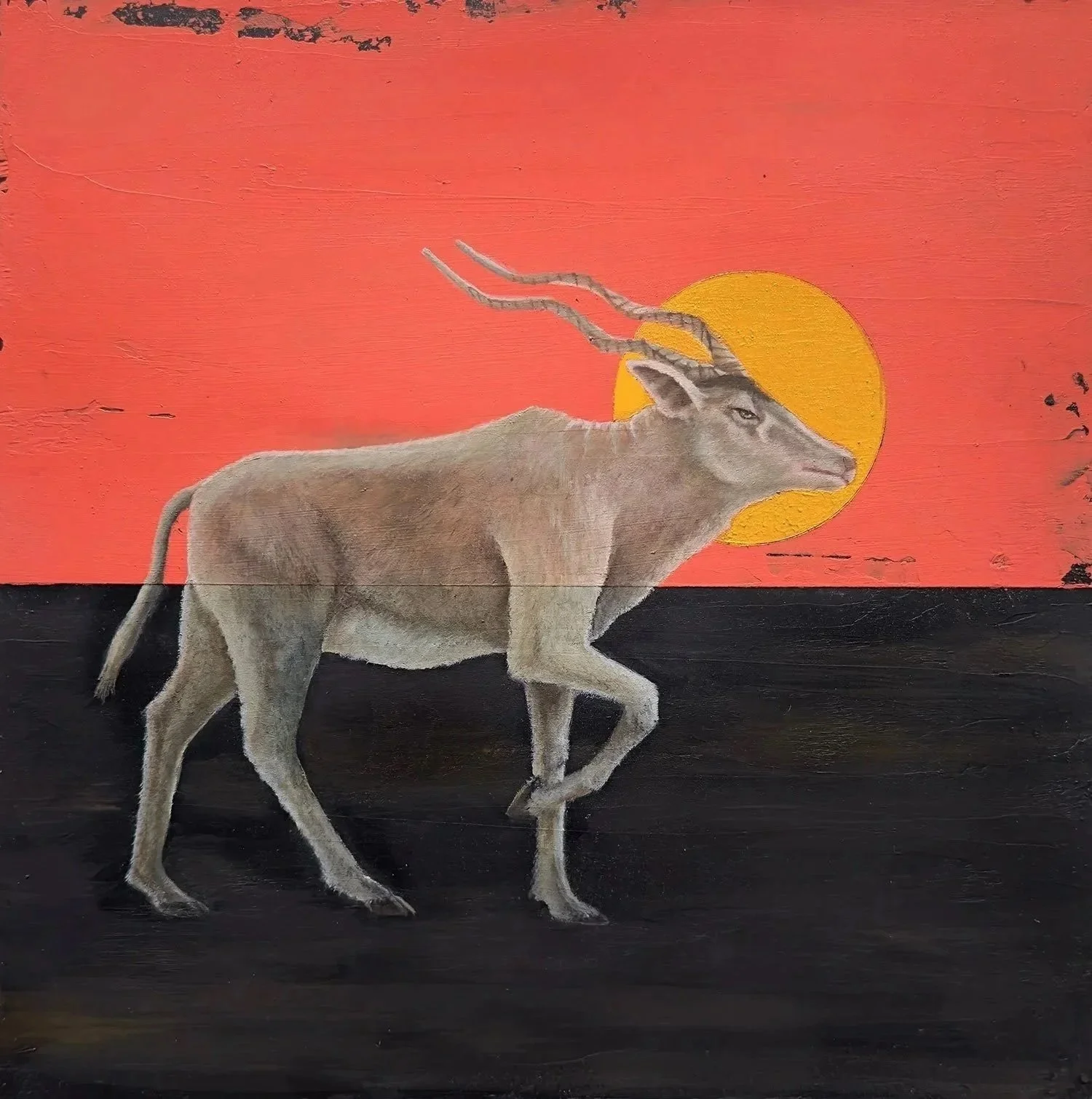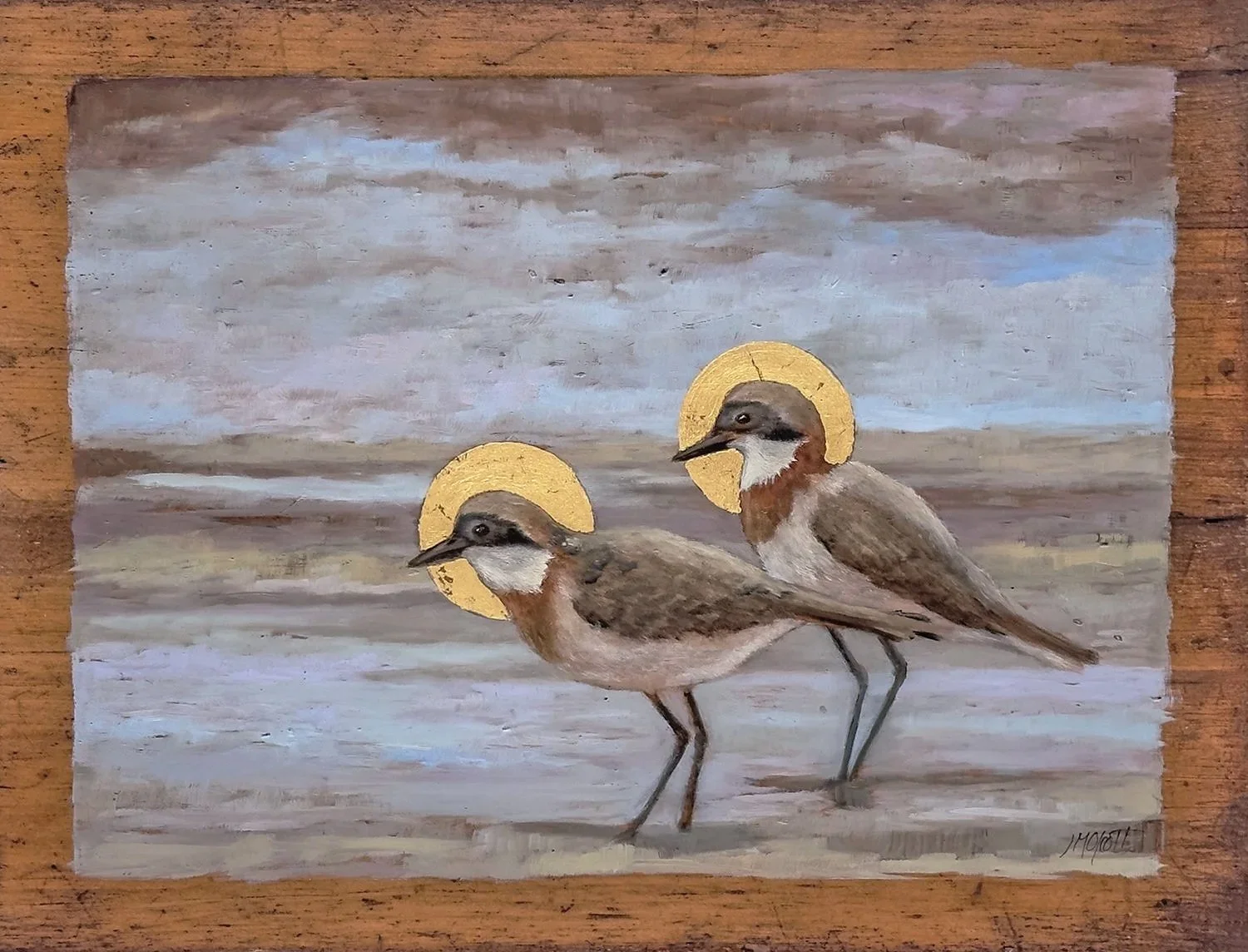JODY OLCOTT
Jody Olcott's work remembers extinct animals and calls attention to the many thousands of species at risk of extinction in the coming decades. Olcott, a lifelong artist and naturalist, found inspiration for this series while traveling in Russia and seeing Byzantine religious icons. In her works, she preserves aspects of traditional icons-gold halos, painted wooden panels, decorative constructions —but turns her attention to her own sacred subject: extinct animals. Studying photographs or naturalists’ journals and drawings, she takes great care as a self-taught painter to capture them in benevolently “lifelike” detail. The animals in Olcott's form of altarpieces-species of birds, tigers, wolves—are as diverse as the reasons they are extinct, but their message is singular: a call for better stewardship.
Olcott holds a Bachelor of Science in Design and Environmental Analysis from Cornell University. She works out of her studio in Hopewell, NJ.
-

Reddish Egret (Near Threatened)
oil & gold leaf on foundry mold | 46 x 22 x 9 inches
Found along the Gulf Coast and Florida it is North America’s rarest Heron. In the past plume trade decimated their numbers, currently it is habitat loss and degradation. -

New Zealand Bittern (Extinct)
oil & gold leaf on found wood | 37 x 19 × 4 inches
Last recorded alive in the 1890s its demise though unknown is thought to be a combination of introduced predators and hunting. -

Blakiston's Eagle Owl (Endangered)
oil & gold leaf on foundry mold | 37 x 22 x 10 inches
Found in Eastern Russia, China and Japan, it is one of the rarest and most habitat-dependent owl species in the world, relying on a delicate balance of old-growth forests, undisturbed river systems, and stable fish populations to survive and reproduce. -

Addax, (Critically Endangered)
oil on panel | 10 × 10 inches
The wild population located mostly in Niger is estimated to be under 100. Their decline due to poaching and habitat disturbance from oil exploration -

Siberian Sand Plover (Endangered)
oil, cold wax, & leaf on wood | 12 × 16
This birds rapid decline is most likely tied to environmental deterioration due to coastal development of the Yellow Sea region, a primary staging area during migration. -

Wild Bactrian Camel, (Critically Endangered)
oil on panel | 10 × 10 inches
In decline in China and Mongolia, extinct in Kazakhstan, it has become a target of persecution hunting as they compete with domestic camels and livestock for water and grazing. -

Falkland Islands Wolf (Extinct)
Charles Darwin arrived at the Falkland Islands in 1833, and described this wolf species as rare and tame. A blend of fox and wolf traits, short legs and a white tipped tail, he predicted this would lead to its demise. Like many island species, it was totally naive to predators - including humans - and was easily killed by early European settlers. By 1876 they were hunted into extinction.
-

Knock 'em Dead, Riverine Rabbitt (Critically Endangered)
oil paint, found materials | 25 × 24 × 8 inches
With ears and bodies generally longer than most rabbits this species native to the Karoo Desert in South Africa is in decline due to loss and degradation of habitat.
